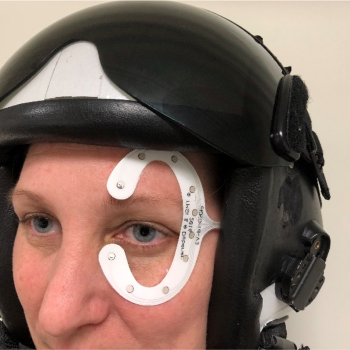System and Method for Calibrating Electrooculography Signals Based on Head Movement

Eye-tracking technology is crucial for applications ranging from medical diagnostics to user interface design in which accurate measurement of eye movement is paramount. There is a need for greater precision, as the ability to reliably track eye state plays a vital role in diagnosing and monitoring various health conditions. The challenge with current eye-tracking approaches lies in the isolated consideration of eye movement without accounting for accompanying head movements. This limitation often leads to inaccuracy because head movements can influence eye state data. An integrated solution that considers both head and eye movements is essential to overcome the inaccuracies prevalent in existing technologies.
Technology Description
This invention describes a sophisticated process to calibrate eye information by using both eye state and head state data. Calibration occurs by correlating eye movement data with head movement data, possibly during natural vestibulo-ocular reflex instances. Enhancements are achieved in measuring eye angles after calibration, providing highly accurate eye state information. The technique stands out for its ability to improve the precision of eye-movement tracking. Current eye-tracking methods often fail to account for concurrent head movements, leading to less reliable data. The correlation during the vestibulo-ocular reflex, an involuntary eye movement that stabilizes images on the retina during head movement, allows for unique and significantly improved tracking of eye-health metrics.
Benefits
- Increased accuracy in eye-movement tracking and measurement
- Enhanced reliability for health condition diagnosis and monitoring
- Integration of eye and head state data for comprehensive analysis
- Potential for real-time calibration in dynamic environments
- Contribution to safer driving and enhanced virtual reality experiences
Potential Use Cases
- Medical diagnostics for detecting and monitoring eye-related health conditions
- Enhanced virtual reality systems needing precise eye-tracking for improving the user experience
- Advanced driver assistance systems to monitor driver alertness and prevent accidents
- Research in psychology and neuroscience, particularly in understanding the vestibulo-ocular reflex
- Improved user interface design for accessibility technologies, aiding individuals with disabilities